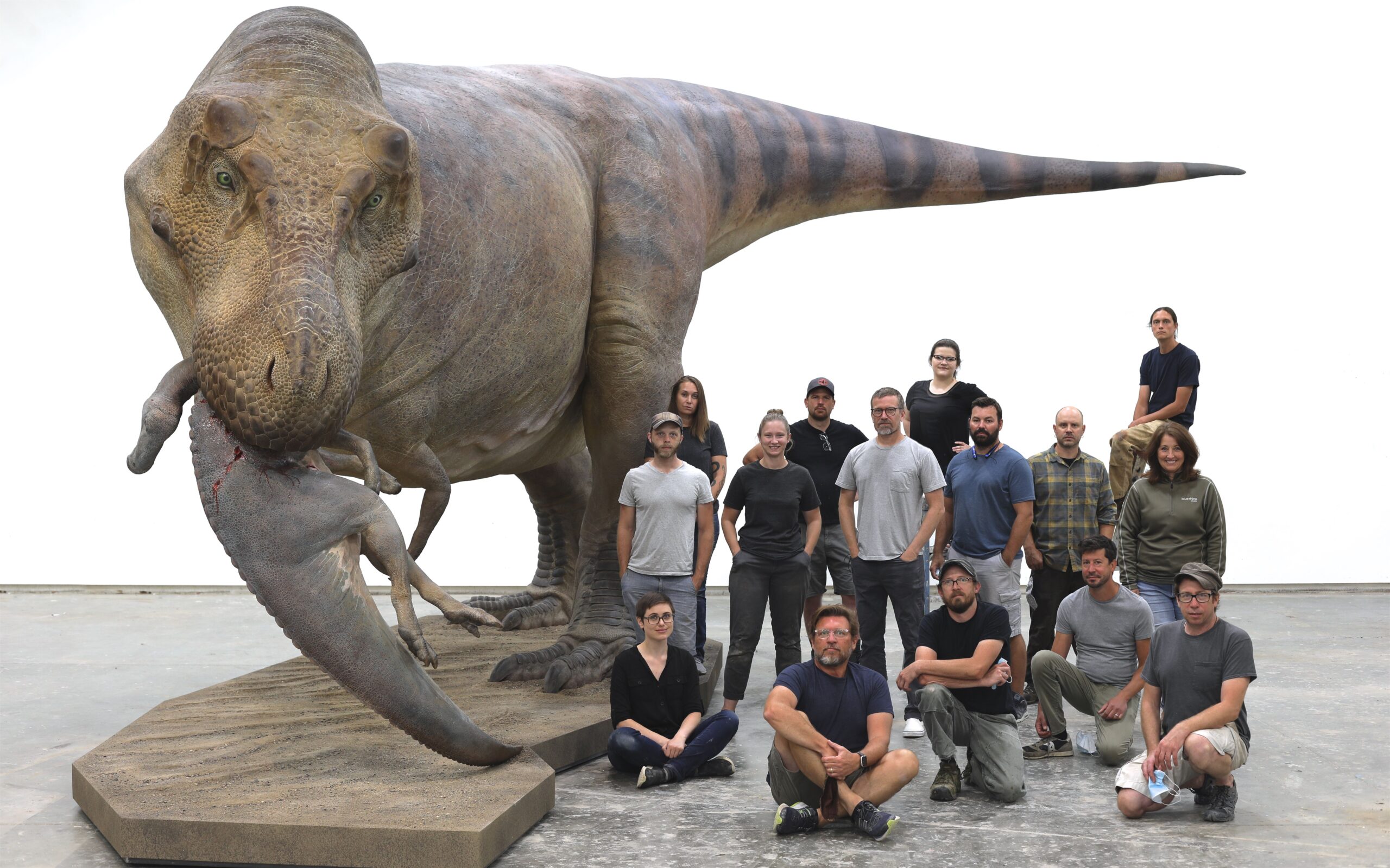Most of us don’t get to say we work with dinosaurs for a living. For Gustavus art alum Tim Quady ’91, however, dinosaurs are just part of everyday life. Twenty-three years ago, he started Blue Rhino Studio, a custom design and artistic fabrication studio that does work for natural history museums around the world.
While Blue Rhino Studio is most well known for its work with animal models, both prehistoric and contemporary, they also do full diorama work, which includes groundforms, trees, plants, animals, people, and murals. “Basically anything artistic you’d find in a natural history museum, we do,” says Quady.
Currently, they are working on a Tyrannosaurus rex and a Quetzalcoatlus for a museum in Prague, a couple of Quetzalcoatluses for the Science Museum of Minnesota, elements for the St. Croix state park visitor center, dinosaurs for the Palo Alto Junior Museum and Zoo, and a deep-sea exhibit for the Monterey Bay Aquarium. “There’s kinda dinosaurs all over the place at the moment, which is pretty great,” he says.
Quady and Blue Rhino Studio strive to ensure all of their work is as scientifically accurate as possible. “Our job, in the end, is to take everything that is in the paleontologist’s head and bring that to life for visitors and normal people to see what they see and understand what they understand,” says Quady. When given a project, the team first does initial research themselves before working with a paleontologist. After the initial research process, they build a scale-model and show it to the client for feedback.
One of the most important parts of the scale-model is to figure out the pose of the animal. “We’re trying to use the animal to tell the largest story we can,” Quady says.
Normally, the studio is working on anywhere from three to 10 projects in the shop at once. These projects can take anywhere from two weeks to two years to complete, depending on the size of the project and the client. Recently, the studio created a flesh restoration of “Sue” the T-Rex for the Field Museum’s travelling exhibit. As a travelling exhibit, this project presented some different challenges. “It has to be extremely realistic, it has to be extremely scientifically accurate, and it’s also got to be something that people can disassemble, and ship, and reassemble rapidly, easily, and safely,” he says.
Quady got into the business through his uncle, who was a designer for a trade show firm that did some work with museums. That company bought a smaller company that did work similar to what Blue Rhino Studio does now, and Quady was hired to help clear out a warehouse to move them from Iowa to New Hope, Minn. He worked there for 9 years before the company lost the small, intimate feel he preferred. He left and started Blue Rhino Studio with David Leak ’77, which has now been in business for 23 years. “We just, over time, evolved from being guys who could do a little bit of everything to a group of people who are exceptionally good at a much narrower scope of work,” he says. Another Gustie, Anders Schmidt ’06, joined the Blue Rhino team in January of 2013.
Quady says he relies on the ability to form small, personal connections in his work that he learned at Gustavus. “People look at my job, or the job of Blue Rhino as being just the artistic end, but so much of what I specifically do within the company relies on my interaction with people, and cultivating those relationships,” he says.
Other than six weeks where everything was shut down, Blue Rhino has been working throughout the pandemic. Quady says that they’ve been relatively lucky. “The lights will have always been on, everybody will have always been working, everybody will have always been paid, nobody will have gone home, and we won’t owe anyone any money at the end of the year, and I think that’s a massive success story,” he says.

Leave a Reply
You must be logged in to post a comment.